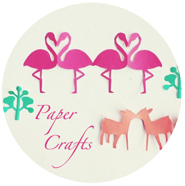With the Rainbow Loom trend taking off locally, and hearing that some mums are organizing Rainbow Loom parties for their kids, it is a good indication that Singaporeans are warming up to the idea that ‘I can actually make stuff!’

Yes, there is more to life than our National Library banning books, lack of places in Primary school and the focus on our children’s academic achievements .
And why should parents care about the Maker Movement?
If you have noticed in the last 10 years, having aspirations like doctors, lawyers or even bankers just will not cut it anymore. Besides we can’t have too many of these. We need more than just people who can save lives, fight for rights, or invest money for the well-to-do.
People who can invent, create, modify, hack, tinker, craft or just simply make, is more creative and productive than a group of people who refuse to make anything but plenty of noise.

This is not a new idea, since artists have been doing it for thousands of years. But with technology and the internet, this movement have been transformed into a community activity.
What is the Maker Movement About?
The fundamental motivations of the Maker Movement stems from human needs of being creative and purposeful.
To be fully human is to reflect God’s creative, spiritual, communicative, relational, moral and purposeful capacities. But don’t confuse being created in God’s image to being God.
We are creative, even though many of us don’t think so.

If we never get to expose our children to their creative and purposeful capacities, how much of their potential is being unrealized?
How does a parent introduce the Maker Movement at home?
Instead of running out to buy the next construction building toy (i.e., Lego), play dough set, download Minecraft on your mobile phones, buy an expensive 3D printer or buy the Rainbow Loom, if you haven’t got one yet.
The Maker Culture can span from traditional art and crafts, cooking to technology (e.g., building robots with LED lights or designing a new avatar). Introducing the Maker Movement is a better alternative to the iPads and game consoles that so many children are obsessed with these days.

Many of the home-based Maker projects are all about embellishing, decorating and seeking the beauty in life, or simply, just creating something made with love. Find projects that your child can personalize and make with pride.

You really don’t need schools to introduce this to your child. However, if the local government recognize this trend, there could be more opportunities of hands-on learning for our children in school.
In the meantime, look to the internet and Pinterest for plenty of project ideas.
One word of caution though, the internet has a tendency to keep you mesmerized by the amazing number of things that you can create and DIY. So be careful not to be flooded with lots of information, and lose track of the focus to translate this information to something productive.
So just go and make something!
——–
So what’s my latest craft obsession? Connect with me on Pinterest.
To explore the Making Culture on a public arena, you can check out the Singapore’s Mini Maker Faire at the end of this month.
** This is not a sponsored post. I personally advocate the Maker culture at home with my child, as I see the benefits and the purposeful-ness of being able to make your own things and express your creativity.




















I love this blog post! And it’s so refreshing to read about your endorsement in crafting pursuits! Looking forward to more of these articles!